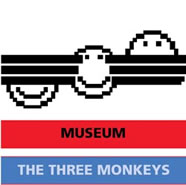Museum »The Three Monkeys«
This museum is tiny. It consists of about seventy specimen of things related to the three monkeys. I'm not so interested in the more traditional souvenir versions in bronze, stone and wood. But I'm interested in the contexts where the three monkeys are used for communication. Namely to tell a story. Either pretty direct as it can be seen, for example, in the postcard by Anne-Marie Høeg from Kvindegalleriet (1972) - or more depending on the text which develop and interpret the rather fluid metaphor as The Three Monkeys appears to be. |
Here there will always be sixteen examples 'on display' from my collection. They will be replaced from time to time.
Bruno Ingemann Ph.D. |
If you want to read more about the fluid metaphor you can go to the chapter in my new book: |
This museum was placed on the site of Roskilde University, Denmark - and is here in 2016 moved to this place. |  |
|||
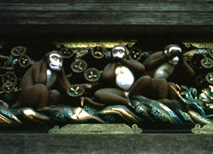 |
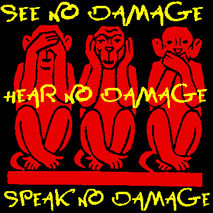 |
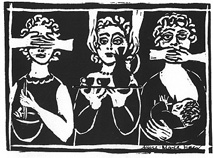 |
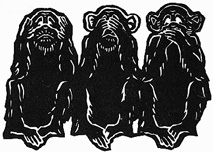 |
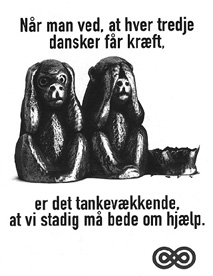 |
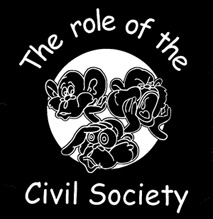 |
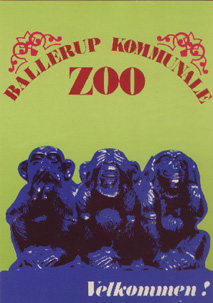 |
 |
|
Nikko, Japan. Photographed by Simon Heilesen around 1990. Hear no evil, speak no evil, see no evil In Japanese culture the three monkeys have a religious connotation. At the beginning of the late Muromchi period (1333-1568), it was customary to carve them into koshinto, stone pillars used during the observance of Koshin. According to the early 19th century Kiyo Shoran, the three monkeys are also associated with the religious complex of Sanno, where they play the role of divine messengers. The three monkeys represent the three truths of the Tendai sect in Buddhism. The founder of the Tendai sect, Saicho, is said to have carved a representation of the truths in the shape of monkeys. There is a famous carving of the three monkeys in the holy stable of Toshogu Shrine in Nikko, Japan. Cuts of the monkeys were believed to prevent disease in horses. A postcard from Nikko states: The three monkeys are said to come from China and that they cover their eyes, ears and mouth to symbolise the old maxim, “See no evil, hear no evil, speak no evil”. It is believed that the Buddhist priest Dengyo (762-822) was the first to engrave the three monkeys on a Koshin tablet. |
It is almost universally agreed that pesticide exposure heightens the risk of cancer. Yet because there are so many external factors to consider, (like the effects of other chemicals in the environment, behavioral or physiological differences, or cumulative exposure over time), it is nearly impossible to pinpoint an exact cause-and-effect link. As Mary O'Brien of Pesticide Action Network writes, the epidemiological literature linking pesticides to cancer, is for the most part, "See no damage, hear no damage, speak no damage."
|
Postcard 105 x 150 mm Linocut: Anne-Marie Høeg Pubished by Kvindegalleriet, Copenhagen around 1972.
|
Cover illustration of Sigrid Thomsen’s book, The Three Sad Monkeys (Tre triste aber), Gyldendal, 1980. Look, we - weak readers - are similar to the three little monkeys. We manage partly by being copycats. We imitate the clever ones that can read, hear absolutely correctly and convincingly repeat what we hear. We have to rely on and even believe in them. We try in good faith to say what they told us - as we have seen it. |
Postcard from a campain from Size: 150 x 105 mm. The motif is also used on a poster and a flyer. "When you know that every third Dane gets cancer - it is thought-provoking that we still have to ask for help." |
Actionaid Denmark 2001. Zambia The main theme of this year's workshop was the role of civil society. To the annual meeting was made ??a logo: three monkeys, respectively, big ears, big eyes and a big mouth, which should illustrate the role of civil society, namely the one who sees and hears and speaks to secure democracy and development. |
Postcard 150 x 105 mm. Made by Mikael Witte. Published by the Society for Beautiful Urban Renewal, No. 66 in 1980. Mikael Witte has sent me the following information: At the beginning of March 1980 called The Mayor of the suburb Ballerup outside Copenhagen, Kay Burchardt, the municipal school teachers and librarians for 'leftist monkeys'. On 11 March I was ready with the first version of the poster 'Ballerup', which was published as a poster no. 66 in my series (printed in green, blue and red, size: 44x61 cm). In April 10, 1980 writes the local newspaper Frederiksborg Amtsavis below the reproduction of the poster among others: 'Kaj Burhardt seems obvious that the poster is very good, and he has even offered the local teachers' union to sell artwork for them and the forthcoming trial. But according to the mayor, the district chairman Rigmor Jark has declined the attention.' |
Nielsen, Jens-Emil & Rasmussen, Kjeld (1996): Write, speak and be heard. A handbook of dissemination for social workers [Skriv, tal og blive hørt. En håndbog i formidling for socialarbejdere], Forlaget Børn og Unge. |
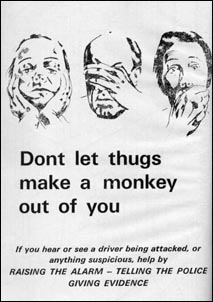 |
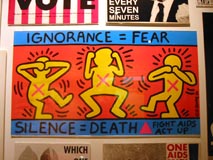 |
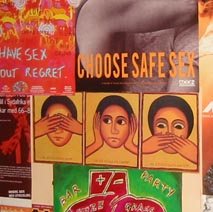 |
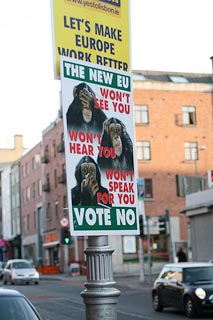 |
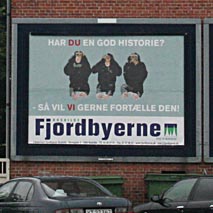 |
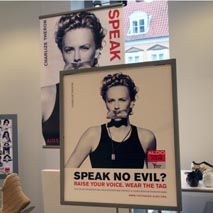 |
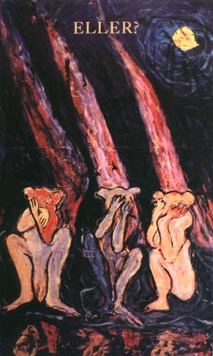 |
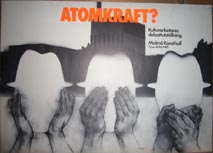 |
Poster hung in the buses in Dont let thugs make a monkey out of you If you hear or see a driver being attacked, or anything suspicious, help by RAISING THE ALARM - TELLING THE POLICE GIVING EVIDENCE |
Poster by Keith Harring (1989) This poster hung among hundreds of others around the theme of AIDS and photographed in the spring of 2005 in an exhibition at World Museum in Gothenburg, Sweden and was open from December 27, 2004 to June 18, 2006. NO MAN FEVER The exhibition puts HIV/AIDS in a global perspective. Through art, personal stories, movies, music, photos, examples of political activism and campaign materials from different parts of the world, the visitor gets a broad and emotional understanding of the disease. The meeting with people’s tremendous will to survive inspire hope and the will to do something. |
- another poster from the exhibition NO MAN FEVER at the World Museum Museum in Goteborg, Sweden. |
Poster from the referendum in Ireland againt the EU treatment in june 2008. |
Billboard used at the presentation of a new great local free newspaper in August 2007 in Roskilde, Denmark. With this rather strange text: Have YOU a good story? [- And the three monkeys] Then WE want to tell it! |
Photo from a shoe store in Horsens, Denmark. The firm Aldo combines their product - shoes - with aids. ALDO, Canadian footwear and accessories empire, and YouthAIDS have created a global campaign to raise awareness and funds to fight AIDS. The ads feature Hollywood stars, including Ashley Judd, Christina Aguilera, Salma Hayek, Cindy Crawford, Penélope Cruz, LL Cool J, Elijah Wood and Josh Lucas. The ads are all done in black-and white and were shot by Peter Lindbergh. For $5 Aldo is selling Empowerment tags, with words from the campaign which plays off the "Hear no evil. See no evil. Speak no evil." |
Jönsson, Bodil & Wickenberg, Per (1992): On good reason. An inspirational book about the environment for teachers and other future workers [På goda grunder. En inspirationsbok om miljö för lärere och andre framtidsarbetare] "Three little monkeys is a classic motif. In this modern version of Cris af Eneheilm the monkeys shadows for the environment. One will not see - one will not hear - it can be unbearable. And the third says absolutely nothing - so he does not hurt. |
A poster from the art exhibition hall in Malmo, Sweden, 1980. The question is: Atomic Power? - and the answer is the three men wearing hats and having no faces. The drawing is made by the artist Zadig 1974.
|
Revised August, 2016
Bruno Ingemann, Ph.D.,
Roskilde University,
Communication Studies,
P.O.Box 260,
DK-4000 Roskilde,
Denmark.
bruno@.ruc.dk
